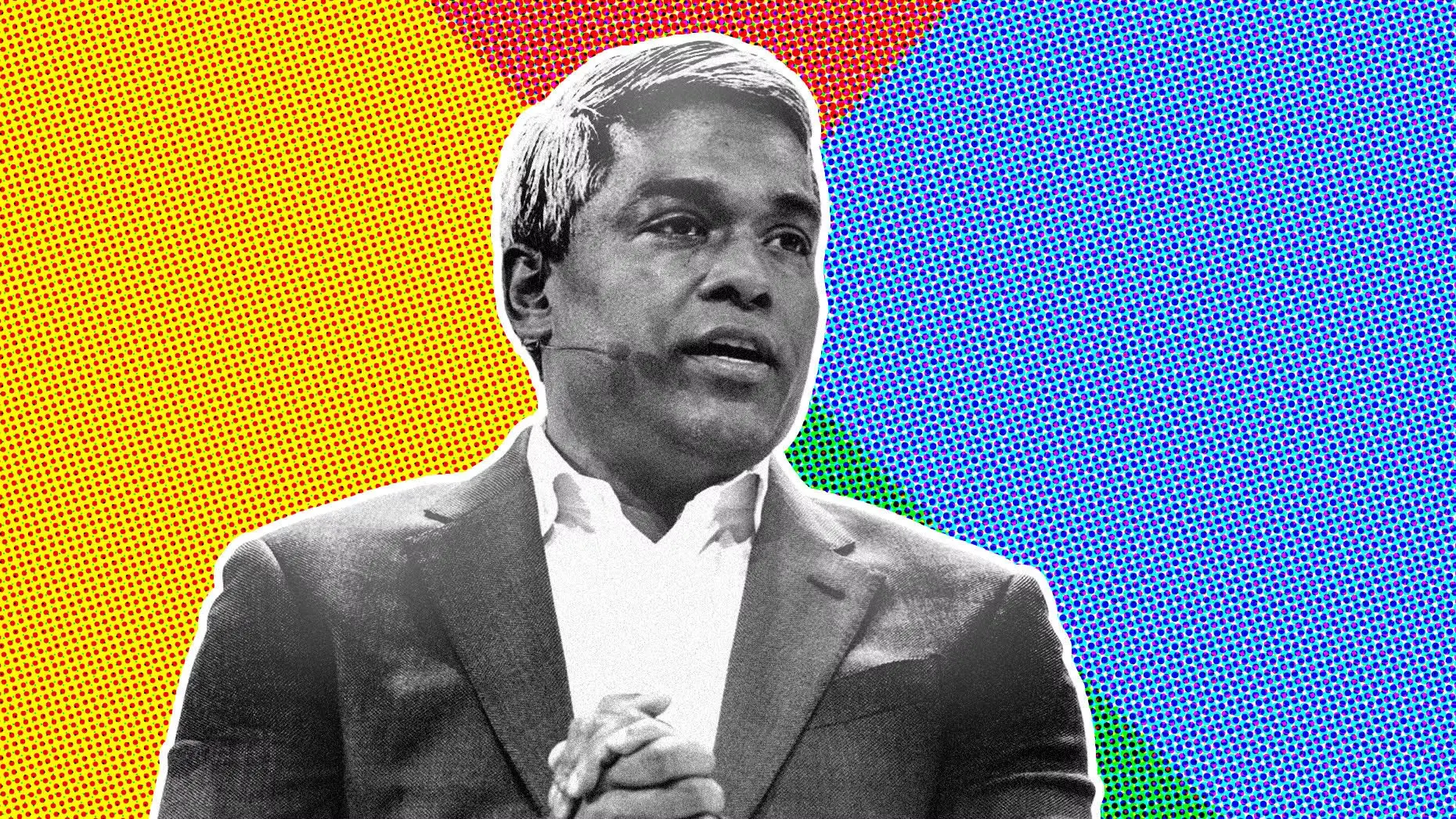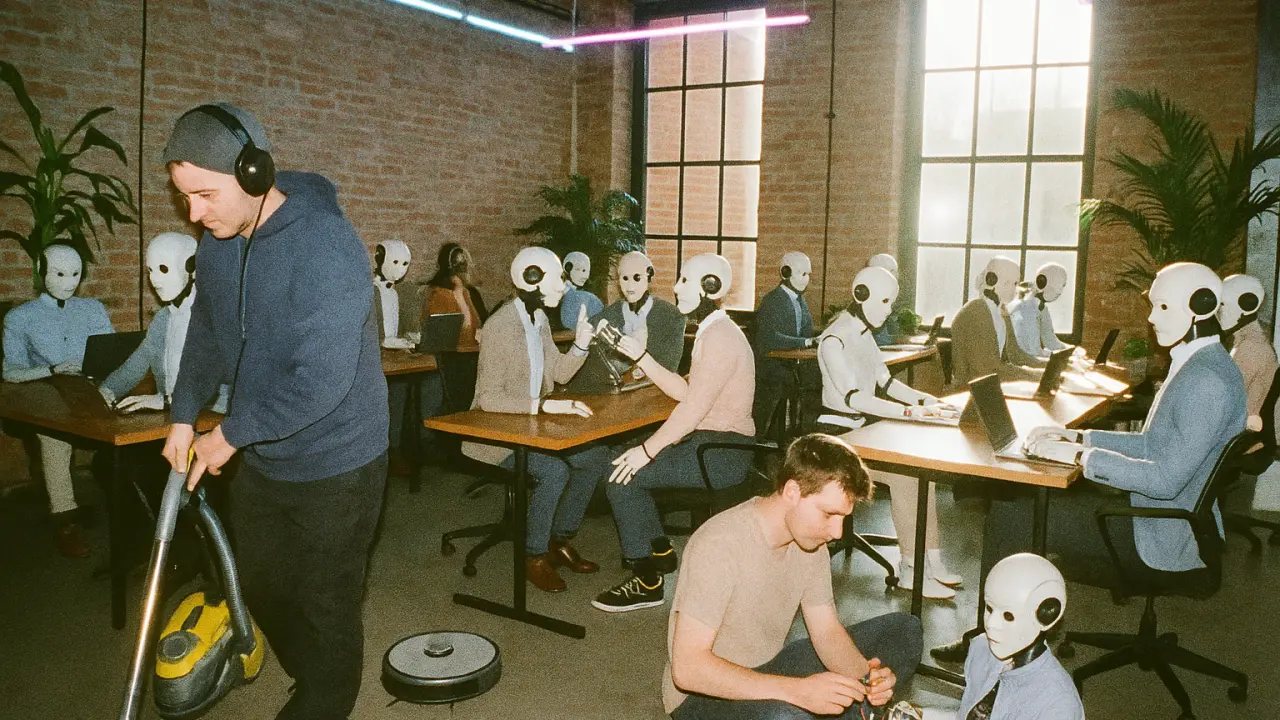
AI Won't Take Your Job (Says the Company Selling AI Tools)
Google Cloud's CEO dismisses AI job fears while tech layoffs tell a different story. Who's telling the truth about automation's real impact on tech careers?
Google Cloud CEO Thomas Kurian wants you to calm down about AI taking your job. In a recent interview, he dismissed fears of AI-driven mass unemployment as “overhyped”, arguing instead that AI will augment human capabilities rather than replace them. This optimistic stance comes from a company that sells AI tools to enterprises, and while the message sounds reassuring, the data paints a more complicated picture.
So who should you believe: the executive selling AI solutions or the mounting evidence that white-collar jobs are already transforming?
The Corporate Contradiction: Productivity Gains vs. Job Cuts
Kurian’s position echoes Google CEO Sundar Pichai, who recently noted that AI has boosted engineer productivity by roughly 10%. The official line is clear: AI enhances human workers rather than replaces them. When Google Cloud introduced its AI-powered Customer Engagement Suite, clients immediately asked if they’d still need human agents. According to Kurian, “almost none of our clients have let anyone go”, the technology instead handles tasks customers previously avoided entirely, like minor questions too trivial for human support.
This augmentation narrative sounds comforting, but it ignores the structural shifts already happening. Accenture recently outlined plans to lay off staff who can’t reskill on AI ↗, while Salesforce CEO Marc Benioff bluntly admitted cutting 4,000 customer support roles because “I need less heads with AI.” JPMorgan Chase CEO Jamie Dimon, while praising AI for saving the bank $2 billion annually, acknowledges some roles are disappearing as AI integrates into everything from risk management to customer support.
The pattern is clear: companies publicly preach augmentation while privately practicing automation.
The Data Doesn’t Lie: Who’s Actually at Risk?
According to an Indeed report, roughly 1 in 4 jobs posted over the past year are poised to “radically transform” due to generative AI. White-collar positions in technology, finance, and professional services face the highest exposure, while roles requiring physical labor or intensive human interaction remain relatively insulated, for now.
The Yale University Budget Lab offers some perspective: despite widespread anxiety, AI’s labor market impact remains “largely speculative.” Their October report notes that “the broader labor market has not experienced a discernible disruption since ChatGPT’s release 33 months ago, undercutting fears that AI automation is currently eroding the demand for cognitive labor across the economy.”
But the transformation is happening more subtly than mass layoffs might suggest. Indeed’s analysis found that 46% of skills in typical U.S. job postings are headed for “hybrid transformation”, where human oversight remains essential but AI handles routine tasks. Only 0.7% of the 2,900 skills analyzed face full replacement, basic math, prompt engineering, and image classification among them.
The Startup Effect: Silent Workforce Reduction
The real displacement might not come from existing companies firing people, but from new companies never hiring them in the first place. As one observer noted, startups are now achieving “hundreds of millions in sales with double-digit teams because they never had to grow the headcount.”
This represents a fundamental shift in business scaling. Where a company might have needed 200 employees to reach $100 million in revenue a decade ago, they might now need 50, or fewer. The jobs aren’t being eliminated from existing payrolls so much as they’re never being created.
The Productivity Paradox: More Output, Fewer Workers?
Imagine two competing companies where AI delivers 50% productivity gains. Company A cuts half its workforce, while Company B keeps everyone and doubles output. Who wins? In theory, Company B should dominate with its expanded capacity. In practice, quarterly earnings pressure often drives Company A’s approach.
Google’s internal studies reveal this tension in action. Their engineers aren’t being replaced by AI, they’re evolving into roles focused more on deployment and integration than raw coding. The company actually plans to hire more engineers, believing AI expands what’s possible rather than shrinking what’s necessary.
But this evolution requires substantial retraining. As companies like KPMG invest $100 million in AI partnerships with Google Cloud, they’re not eliminating positions so much as transforming them, which still leaves many workers behind if they can’t adapt quickly enough.
The Political Reality Check
The optimistic executive view clashes starkly with political concerns. A report from Senator Bernie Sanders’ office warned that AI and automation could eliminate nearly 100 million jobs over the next decade, hitting tech, finance, and customer service roles hardest.
Even within Google’s walls, former executives sound alarms. Mo Gawdat, formerly of Google X, predicts AI could replace most white-collar jobs, potentially creating a “short-term dystopia.” Anthropic CEO Dario Amodei specifically highlighted entry-level positions in law, finance, and consulting as particularly vulnerable.

The Augmentation vs. Automation Choice
The fundamental question isn’t whether AI will transform work, it’s whether that transformation means replacement or enhancement. As Columbia Business School professor Olivier Toubia frames it: “Is AI going to automate your job and make you obsolete, or is it going to augment your job and make you more productive?”
The answer varies dramatically by industry and company philosophy. Some organizations will fully automate customer service with agentic AI (which can perform tasks autonomously, not just generate content), while others will use AI to help human programmers write better code faster.
Most companies currently occupy a middle ground, 64% of small businesses are using or piloting AI tools to varying degrees, creating hybrid workflows where humans and machines collaborate.
Beyond the Hype Cycle: What Actually Matters
Kurian’s comments reflect a necessary correction to AI doomerism, but they also serve Google’s business interests. As a major AI vendor, Google benefits from positioning its technology as collaborative rather than disruptive.
The truth likely lies somewhere between Kurian’s optimism and the most alarmist predictions. AI isn’t the job-killing monster some fear, but it absolutely is reshaping what work looks like, and which skills remain valuable.
For data engineers, analysts, and technical professionals, the message is clear: the question isn’t whether AI will affect your job, but how quickly you can learn to work alongside it. The displacement risk isn’t in the technology itself, but in the gap between current skills and future demands.
The real test isn’t whether AI can do your job, it’s whether you can do your job better with AI’s help. Those who master that collaboration will thrive, those who resist it may find Kurian’s optimism rings hollow in their particular circumstances.
The future of work isn’t about humans versus machines. It’s about humans who work with machines versus those who don’t.



